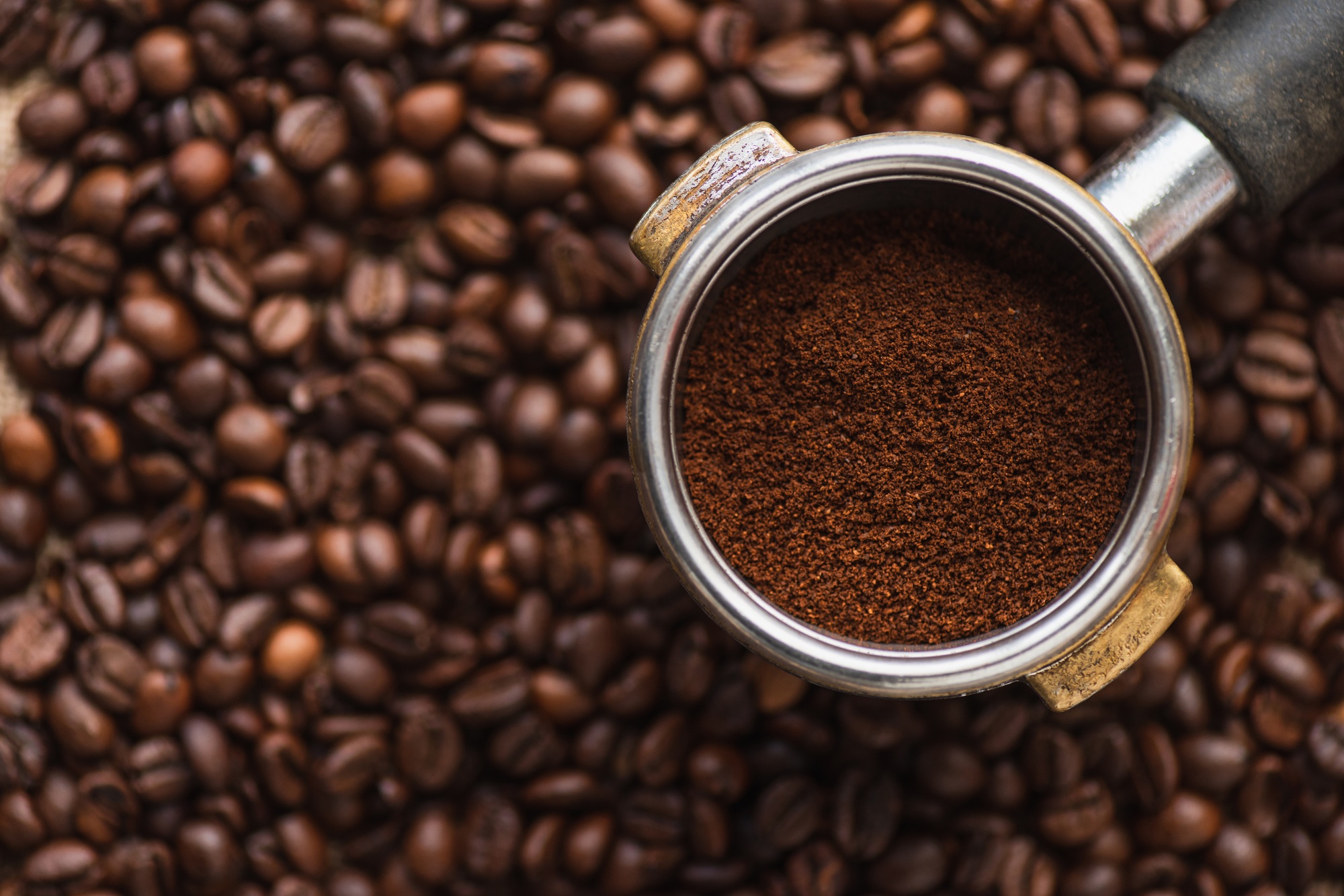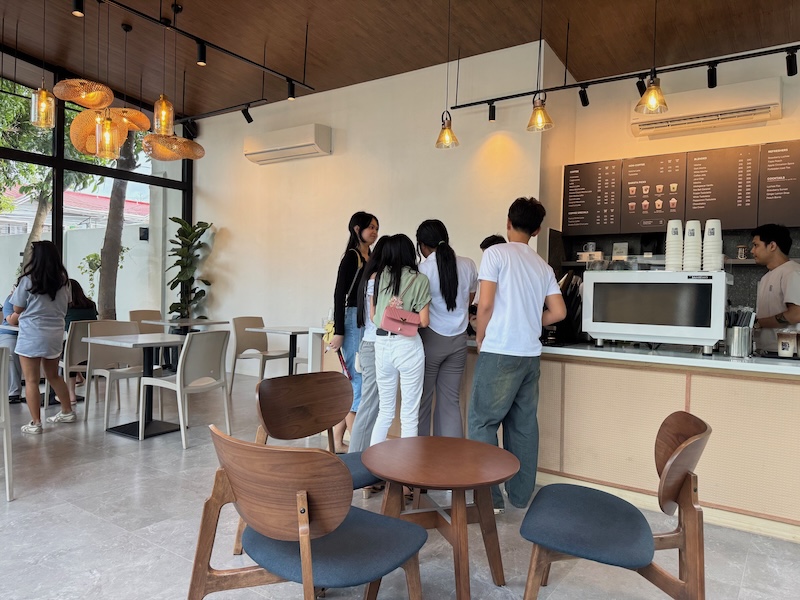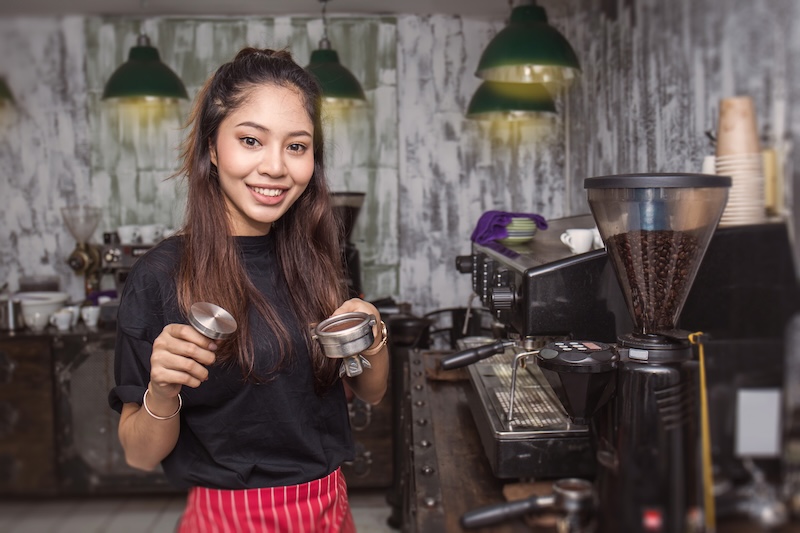Coffee ranks among the world’s most popular drinks after water and tea. The global coffee industry has reached a remarkable $495.50 billion value in 2023. Millions of people drink coffee daily, yet few know the path their morning brew takes to reach their cup.
Coffee comes from seeds found in small red fruits that grow on plants between shrubs and trees. The transformation of these seeds into our favorite drink involves one of the most intricate processes in beverage production. Coffee’s story began on the Arabian Peninsula and reached Egypt, Syria, and Turkey by the 16th century. The 19th century saw coffee become one of the world’s most profitable export crops.
This simple guide covers everything you need to know about your daily brew. You’ll learn about coffee’s composition, rich history, bean varieties, processing methods, and brewing techniques. This detailed introduction will change how you view your morning ritual. Casual drinkers and aspiring connoisseurs will learn about the world of coffee, which will boost their appreciation of every cup.

What is Coffee and Where Does it Come From?
The coffee bean starts its trip as a seed from the Coffea plant’s fruit, which belongs to the Rubiaceae family. People worldwide drink coffee daily, but only a few know about its fascinating origins and botanical complexity.
Understanding the coffee plant
Coffee plants thrive as evergreen shrubs or small trees in tropical regions, mostly in Africa. The Coffea genus has about 120 species, but only two rule global production: Coffea arabica and Coffea canephora (Robusta). These plants can grow quite tall – Arabica reaches 5-6 meters and Robusta 10-12 meters. Farmers usually trim them down to 2-3 meters to make harvesting easier.
You’ll find oval, shiny, evergreen leaves growing in pairs on opposite sides of the stem. The plants bloom several times a year with sweet-smelling white flowers that don’t last long, especially after dry seasons. These flowers turn into bright red “cherries” after pollination. Each cherry holds two seeds – the coffee beans we all know.
What is coffee made of?
Coffee’s complex flavor and effects come from more than 1,000 chemical compounds. These compounds include alkaloids (mainly caffeine), chlorogenic acids, hydroxycinnamic acids, and, after roasting, Maillard reaction products like melanoidins.
Caffeine levels change a lot between species. Arabica beans pack 0.8-1.4% caffeine, while Robusta beans are stronger with 1.7-4.0% caffeine. This explains why many people think Arabica tastes milder and more flavorful, while Robusta gives you a stronger, more bitter taste.
Scientists have found about 300 chemicals in green beans. This number jumps to over 850 after roasting. All these chemicals work together to create coffee’s unique smell, taste, and energizing effects.
The story of Kaldi and the goat
People often credit an Ethiopian goatherd named Kaldi for finding coffee around 850 CE. The story goes that Kaldi saw his goats bouncing with energy after eating berries from a certain bush. His curiosity led him to try these berries, and he felt the same alertness.
The story tells us that Kaldi showed his discovery to nearby monks. They didn’t approve at first and threw the berries into a fire. The amazing smell made them change their minds. They picked up the roasted beans, ground them, and mixed them with hot water – creating what many call the world’s first cup of coffee.
This delightful tale shows up in many books, but scholars point out that Antoine Faustus Nairon first wrote it down in 1671, about 800 years after it supposedly happened. Notwithstanding that, it remains the most popular origin story in Western literature.
How coffee spread across the world
Ethiopia gave birth to coffee cultivation. The drink’s global adventure began when it crossed the Red Sea to Yemen in the 15th century. Yemen’s capital city, Aden, saw the rise of the first coffee houses (kaveh kanes). From there, coffee made its way through the Arabian Peninsula.
Coffee reached Persia, Egypt, Syria, and Turkey by the 16th century. These places embraced it as part of their social life. Coffee houses became popular spots for conversations, news, and intellectual discussions. People called them “Schools of the Wise”.
Italian merchants brought coffee to Europe in the 17th century through their Ottoman Empire trade. Venice opened Europe’s first coffee house in 1645. Dutch colonizers then took coffee plants to Indonesia, specifically Java. This move created the first major production outside Africa and Arabia.
A game-changing moment happened in 1714. The Mayor of Amsterdam gave a young coffee plant to France’s King Louis XIV. Seedlings from this plant eventually reached the Americas. This led to huge plantations across Central and South America that now lead world production.
Types of Coffee Beans and Their Characteristics
A fascinating world of bean varieties shapes every cup of coffee you drink. These distinct characteristics create the complex flavors in your daily brew.
Arabica vs Robusta
Two major species dominate the coffee world: Arabica (Coffea arabica) and Robusta (Coffea canephora). Arabica leads the market and makes up about 60-70% of global coffee production. These beans need specific conditions to grow well. They thrive at higher altitudes between 3,000-6,000 feet and need steady rainfall with plenty of shade. Robusta beans live up to their name – they’re tougher and make up 30-40% of worldwide production. These resilient plants grow at lower altitudes, handle irregular rainfall better, and fight off diseases more easily than Arabica.
Where are different beans grown?
The “Bean Belt” between the Tropics of Cancer and Capricorn creates perfect conditions for coffee plants. Ethiopian highlands produce some of the world’s best Arabica beans with rich, complex flavors. South America’s coffee giants, Colombia and Brazil, dominate production, with Brazil leading worldwide. Guatemala and Costa Rica create bright, well-balanced coffees that coffee lovers seek out. Vietnam, the world’s second-largest producer, focuses mostly on Robusta varieties. African production splits geographically – western regions grow Robusta, while eastern countries like Ethiopia and Kenya focus on Arabica.
How does bean type affect flavor and caffeine?
Your coffee’s taste depends heavily on the bean variety. Arabica beans give you a smooth, sweet cup with hints of fruit, flowers, and nuts, plus a pleasant acidity that adds depth. These beans contain less caffeine (0.8-1.4%) than their Robusta cousins. Robusta beans pack more punch with stronger, bitter notes and earthy, woody flavors along with twice the caffeine[103]. The intense nature of Robusta makes it perfect for espresso blends because it creates a better crema – that creamy layer on top.
Specialty beans and single-origin coffee
The coffee world’s highest grade belongs to specialty coffee, which must score 80+ points on the 100-point Specialty Coffee Association scale. These premium beans need to pass strict quality tests with fewer than five defects per 350g, and farmers pick them by hand at peak ripeness. Single-origin coffees come from one specific place – a single farm, region, or country. You can taste the unique flavors that come from their specific growing environment. Micro-lot coffees take this concept even further. They come from just one field on a farm and give you a unique taste experience.
From Farm to Cup: How Coffee is Processed
Your morning cup of coffee starts with an amazing experience that changes raw cherries into the beans you know. The beans go through several steps that substantially affect their flavor. Coffee needs specific techniques to turn fruit into green beans ready for roasting.
Harvesting and drying methods
Farmers collect coffee cherries in two ways: strip picking or selective picking. Strip picking removes all cherries from a branch at once, whatever their ripeness level. Selective picking needs workers to hand-pick only the ripest cherries. This method takes multiple passes through the plantation but produces better quality coffee. Fresh cherries need processing within 24 hours to stay fresh.
Wet vs dry processing
The way coffee seeds separate from fruit creates the main difference between processing methods.
Dry processing (natural method) stands as the oldest technique. The sun dries whole cherries on patios or raised beds for 2-4 weeks. Workers turn them regularly to stop mold from growing. Natural fermentation happens while cherries dry. This gives beans sweet, fruity, and sometimes wine-like flavors. This method needs little water but requires careful watching to avoid problems.
Wet processing (washed method) removes cherry skin and pulp before drying starts. Beans ferment in water tanks for 12-24 hours after pulping. This breaks down the remaining mucilage. A thorough wash follows, then drying begins. These coffees usually taste cleaner and brighter with clear acidity and floral notes.
Honey processing (pulped natural) offers a middle path. Workers remove the skin but leave different amounts of mucilage on beans while drying. The amount of remaining pulp creates unique flavor profiles – more pulp means sweeter, fruitier notes.
Grading and sorting beans
Coffee goes through strict grading based on these factors:
- Size (screened through different-sized meshes)
- Density (using gravity tables)
- Visual inspection for defects
- Color uniformity
- Cup quality (flavor evaluation through cupping)
The Specialty Coffee Association uses a 100-point scale to grade coffee. Beans scoring 80+ become specialty grade. Lower quality beans usually end up in commercial blends or instant coffee.
The role of green coffee
Green coffee means processed but unroasted beans – the raw material that roasters use worldwide. These beans stay fresh for long periods if kept at proper humidity (around 10-12% moisture content). Green coffee contains all the potential flavors that roasting will develop later. Bean variety, growing region, and most importantly, the processing method change their chemical makeup substantially.
Roasting and Grinding: Unlocking Coffee’s Flavor
Green coffee beans go through their most magical change at the roastery—roasting. This vital step brings out complex flavors hidden in the beans and gets them ready for brewing.
Light, medium, and dark roasts
Roast levels fall on a spectrum, mainly grouped into three types:
- Light roasts (city, half city, cinnamon) have a light brown color without oil on top. They reach internal temperatures of 356-401°F (180-205°C) and keep more of the bean’s original character. These roasts bring out bright acidity and delicate floral notes while keeping the highest caffeine content.
- Medium roasts (American, breakfast, city+) hit 410-428°F (210-220°C) and show a slightly deeper color with balanced flavor, aroma, and acidity. They taste sweeter than light roasts and have hints of caramel and chocolate. Most people choose these for their daily coffee.
- Dark roasts (French, Italian, Spanish) reach 464-482°F (240-250°C) and show a shiny, oily surface with deep brown color. These roasts have bold, smoky flavors that often mask the bean’s original taste. They’re less acidic and have less caffeine than lighter roasts.
How roasting changes taste and aroma
Roasting kicks off complex chemical reactions. The Maillard reaction (like what happens when you brown meat) creates hundreds of new compounds. Sugars break down into new flavor molecules through caramelization. Acids break down, and oils move to the bean’s surface.
Beans make two distinct “cracks” while roasting. The first crack shows they’ve reached light roast stage, and the second crack means they’re in dark roast territory. The process drops moisture content from 10-12% to about 3%, so beans weigh less but grow in size.
Grinding levels for different brew methods
The right grind size makes a big difference in coffee quality. Coarse grinds (like sea salt) work great for French press and cold brew. These methods need slower extraction over longer steeping times. Medium grinds match well with drip brewers and pour-overs for balanced extraction. Fine grinds (like granulated sugar) are perfect for espresso machines where water runs through grounds quickly under pressure. Extra-fine grinds (powdery like flour) work only for Turkish coffee, where grounds stay in the final drink.
Brewing Basics: How to Make a Great Cup of Coffee
You don’t need advanced barista skills to make great coffee at home. The right knowledge about brewing methods, water temperature, and grind size will lift your daily coffee ritual.
Popular brewing methods explained
Different brewing methods extract coffee’s flavors in unique ways. Each method creates its own taste profile. Pour-over brewing lets water flow through coffee grounds by gravity. This creates clean, bright flavors that bring out subtle notes. The method works best when making one or two cups. French press steeps grounds directly in water for 4-5 minutes before filtering. The result is a full-bodied, rich cup. AeroPress blends immersion with pressure to create a smooth, concentrated brew that travelers love. Espresso pushes water through finely ground coffee in seconds under high pressure. This produces an intense, concentrated shot. Auto-drip brewers make serving multiple people easy, and quality models brew excellent coffee.
How does water temperature and grind size matter?
Water temperature substantially affects extraction. The sweet spot for brewing falls between 195°F and 205°F. Coffee becomes sour and weak with cooler water due to under-extraction. Hot water causes over-extraction and bitter flavors.
Grind size determines how quickly flavors are extracted. Espresso needs fine grounds that feel like powdered sugar. Pour-overs work best with medium grounds similar to table salt. French press requires coarse grounds resembling sea salt. Your coffee might taste too acidic with grounds that are too coarse. A bitter taste often means the grind is too fine.
Tips for better home brewing
These essentials will help you brew better coffee:
- Use filtered water – Coffee’s taste depends heavily on water quality since it’s 98% water
- Invest in a burr grinder to get consistent particle size
- Measure with a scale instead of scoops for accuracy (1:15 to 1:17 coffee-to-water ratio works well)
- Preheat your brewing equipment to keep the right temperature
- Allow fresh-roasted coffee to “bloom” by adding a small amount of water at first
- Stir the grounds gently while brewing to extract evenly
The path to finding your perfect cup includes trying different beans and methods. That’s what makes coffee brewing such a rewarding experience.
Your Daily Brew, Better Informed
Now that you know coffee’s trip from farm to cup, you can take your daily coffee ritual up a notch. Coffee means much more than your morning routine—it’s a world of complex experiences that await you with each brew.
Your coffee appreciation starts with a refined palate. Pay attention to specific flavor notes in your cup. Look for fruity, nutty, or floral characteristics. Regular tasting helps you spot subtle differences between beans and brewing methods. Coffee professionals use a technique called “cupping” to assess different coffees based on aroma, flavor, and mouthfeel.
Quality ingredients create an exceptional home brew. Use filtered water since 98% of coffee is water. Your beans stay fresh for several months in airtight, opaque containers at room temperature, compared to just two weeks for unprotected beans. A scale gives you precision that measuring cups can’t match.
Your brewing techniques shape your coffee experience:
- Preheat your brewing equipment to keep the right temperature
- Let fresh-roasted coffee “bloom” with a small splash of water
- Stir the grounds gently while brewing for even extraction
Small changes to water temperature and extraction time make big differences in your final cup. Too-hot water brings out bitter notes, while cold water leaves your coffee sour from under-extraction.
The best way to enjoy coffee is to savor each sip. Let the coffee rest in your mouth before swallowing to experience its full flavor profile. Find a quiet spot where you can relax and enjoy your coffee without distractions.
Your path to becoming a coffee expert needs constant experimentation. Different brewing methods—from French press to pour-over to AeroPress—show you unique aspects of coffee’s flavor. Each method creates a special experience worth learning about.
FAQs
Q1. What are the main types of coffee beans? The two main types of coffee beans are Arabica and Robusta. Arabica beans are known for their smoother, sweeter flavor with fruity and floral notes, while Robusta beans have a stronger, more bitter taste with higher caffeine content.
Q2. How does the roasting process affect coffee flavor? Roasting significantly impacts coffee flavor. Light roasts retain more of the bean’s original character with bright acidity, medium roasts offer balanced flavors, and dark roasts develop bold, smoky flavors that can overshadow the bean’s original characteristics.
Q3. What’s the ideal water temperature for brewing coffee? The ideal water temperature for brewing coffee is between 195°F and 205°F (90°C to 96°C). Water that’s too cool can lead to under-extraction and weak coffee, while water that’s too hot can cause over-extraction and bitter flavors.
Q4. How does grind size affect coffee taste? Grind size directly impacts extraction rate and flavor. Coarse grinds are best for methods like French press, medium grinds suit drip brewers and pour-overs, and fine grinds are ideal for espresso. Using the wrong grind size can result in coffee that’s either too sour (if too coarse) or too bitter (if too fine).
Q5. What are some tips for brewing better coffee at home? To brew better coffee at home, use filtered water, invest in a burr grinder for consistent grind size, measure your coffee with a scale for precision, pre-heat your brewing equipment, allow fresh-roasted coffee to “bloom,” and stir the grounds gently during brewing for even extraction.
Discover the Flavor Behind Every Bean
Turn your coffee curiosity into a full-sensory experience. Visit Big’s Coffee and enjoy rich, expertly crafted brews in a welcoming space.



